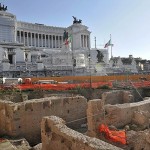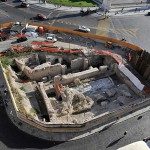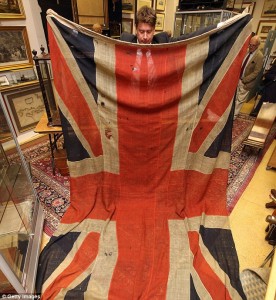 Blackbeard’s flagship, the Queen Anne’s Revenge, ran aground near the Beaufort Inlet in the Inner Banks of North Carolina in 1718. Rumor was that he intentionally wrecked his ships to kill off some of his crew and keep a larger cut of the treasure after accepting a pardon.
Blackbeard’s flagship, the Queen Anne’s Revenge, ran aground near the Beaufort Inlet in the Inner Banks of North Carolina in 1718. Rumor was that he intentionally wrecked his ships to kill off some of his crew and keep a larger cut of the treasure after accepting a pardon.
Wreckage of a ship from that time thought to be the Queen Anne’s Revenge was found in the Beaufort Inlet in 1996 during dredging operations that removed the layers of sand that had kept it safe and snug for hundreds of years. Some artifacts came loose during the dredging, but researchers didn’t want to pull any of them up until strictly necessary.
Finally Thursday divers pulled up a small anchor that they feared would be washed away in storms next year. It’s a grapnel, a four pronged anchor likely used for smaller ships to transport people or cargo from ship to ship or ship to shore.
As more artifacts are recovered researchers are more and more confident that the wreckage is what remains of Blackbeard’s ship.
“This is the oldest shipwreck we have worked on in North Carolina.” Mark Wilde-Ramsing, QAR project manager, said. “It is associated with Blackbeard and every artifact is important for understanding what was going on at the time.”
The 160-pound anchor is one of the largest pieces recovered from the ship so far, but researchers will eventually bring up very large pieces, including cannons weighing about one ton each, Wilde-Ramsing said.
The QAR Project is a state-funded research organization that plans to raise 700,000 individual artifacts from the wreck. They already recovered quite a few small pieces earlier this year, like navigational instruments and a thimblefull of teeny gold pieces. They estimate it will take as long as 7 years to recover them all.
The grapnel was on display just on Thursday for a lucky few who had the chance. Now begins the conservation process. The cleaning will take 6 months, then it will sit in a special treated bath for 2 years. Only then will it be ready to go on permanent display in a museum, probably the North Carolina Maritime Museum in Beaufort.




